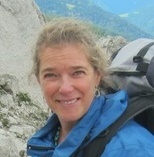NONLINEAR DYNAMICS IN OPTICS: PRESENT AND NEW PERSPECTIVES
Florence
July 20, 2022
Nonlinear Dynamics in Optics:
Present and new Perspectives
Florence, Galileo Galilei Institute for Theoretical Physics
program
Wednesday, July 20 (CET time)
| 14:00-14.15 | Registration of the participants |
| 14-15-14:30 | Opening |
| 14:30-15:15 | Francesco Marino |
| Analogue spatiotemporal phenomena in long-delayed systems | |
| 15:15-16:00 | Cristina Masoller |
| Time-crystal-oscillations in the output of a weakly modulated semiconductor laser with optical feedback near threshold | |
| 16:00-16:30 | Coffee break |
| 16:30-17:15 | Gian Luca Lippi |
| An elusive critical phenomenon: laser threshold as a function of system size | |
| 17:15-18:00 | Round table |
| 18:00-18:45 | Social event |
Abstracts of the contributions

|
Francesco Marino |
Analogue spatiotemporal phenomena in long-delayed systems
When the delay is much longer than any other characteristic timescale, the data generated by a delayed system can be mapped into an equivalent spatiotemporal representation, in which the involved multiple timescales act as mutually independent spatial and temporal variables. This approach had considerable success, as the complex dynamics in the time-domain often results into simpler spatiotemporal patterns in the new representation. I discuss a general framework for the treatment of long-delayed systems in terms of partial differential equations in the thermodynamic limit, and present results from a series of experiments based on semiconductor lasers with long-delayed optoelectronic feedback. A variety of analogue spatiotemporal phenomena are shown to emerge depending on the local dynamics of the system, including domain coarsening and nucleation, front pinning and localized structures, critical phase-transitions and, more recently, excitable waves segments.

|
Cristina Masoller |
Time-crystal-oscillations in the output of a weakly modulated semiconductor laser with optical feedback near threshold
Time crystal oscillations in interacting, periodically-driven disordered
systems are highly regular oscillations that persist for long periods of
time, are robust to perturbations, and whose frequency differs from the
frequency of the driving signal [Yao and Nayak, 2018].
We demonstrate experimentally that
a weak modulation of the laser current induces, near threshold and for
particular modulation conditions, long-range regularity in the intensity
dynamics. With pulsed modulation we found harmonic and subharmonically
locking, while with sinusoidal modulation, we found only subharmonic
locking, which is interpreted as time-crystal behavior [Tiana-Alsina and Masoller, 2022].
|
|
Gian Luca Lippi |
An elusive critical phenomenon: laser threshold as a function of system size
The reduction in laser volume, accompanied by growth in intrinsic efficiency, is a goal that has been pursued form the very beginning of the laser history. The efforts have started to bear startling fruits with the advent of the Vertical Cavity Surface Emitting Laser (VCSEL) and it continuous improvements, which have led to the current entire dominance of the laser market by this kind of device. Further miniaturization, motivated in large part by futuristic applications, has led to the emergence of fundamental questions on the nature of the laser threshold, a concept that until then had been considered as solidly established. The paradoxes which emerge from the considerations of the different aspects, considered as fundamental features of the laser threshold, have puzzled the nanolaser community for decades and only recently insight and acceptance of some of its peculiarities have started to take hold. At the same time, improvements in understanding, characterization and modelling have brought a new understanding of the physics underlying the emergence of the electromagnetic field coherence, proposing links between fields which have developed independently. The final word is not out, but the perspectives are very exciting. The newly discovered features of the transition from incoherent to coherent emission does not limit itself to a fuller understanding of the quantum-statistical properties of the electromagnetic field, but also bears implications onto the dynamics. Four decades on work on the temporal properties of lasers have shed a large amount of light onto the deterministic temporal evolution of the field, in interaction with its energy reservoir and in the presence of numerous coupling choices (through delayed feedback, external injection, a saturable absorber, etc.). At times, the perturbations induced by noise -- intrinsic or external -- have been taken into account and have shown not only the robustness of the laser dynamics but also the richness of its properties. The reduction in cavity volume brings to the fore the intrinsic stochasticity of the processes and removes the possibility of viewing the dynamics as a deterministic process perturbed by small fluctuations. This recognition bears a strong impact onto the study of the temporal evolution of the emission in sufficiently small lasers (including very small commercial VCSELs). Thus, it opens a new avenue of investigation into devices whose properties are somewhat unexpected and whose features may offer entirely new perspectives on novel applications.